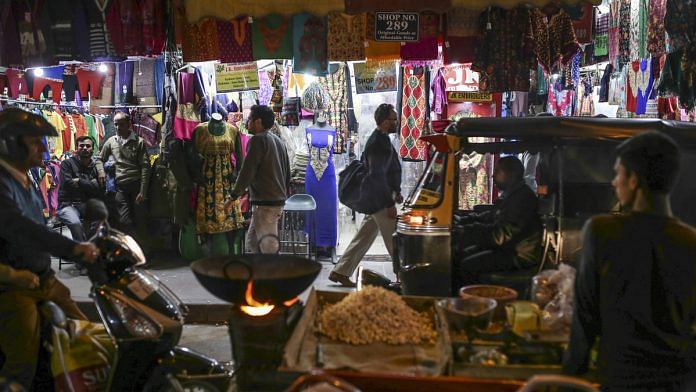New Delhi: Private investment will be key to achieving an annual growth of 8 per cent and making India a $5 trillion economy by 2024-25, the Economic Survey for 2018-19 said Thursday, outlining a prescription for a key objective of the second Modi government.
The survey also called for the creation of an ‘economic policy uncertainty index’ to minimise economic policy uncertainty and encourage domestic and foreign investments.
According to the survey, “such growth can only be sustained by a ‘virtuous cycle’ of savings, investment and exports catalysed and supported by a favourable demographic phase”.
Investment, especially from the private sector, is the “key driver” for demand, and also creates capacity, increases labour productivity, introduces new technology, allows creative destruction, and generates jobs, it added.
A slowdown in investment and consumption has been the major reason behind the growth slowdown facing the Indian economy. The economy slowed for the second consecutive year to 6.8 per cent in 2018-19, from 7.2 per cent in 2017-18 and 8.2 per cent in 2016-17.
Also read: Goal to make India a $5 trillion economy by 2024 challenging but achievable: PM Modi
‘Green shoots’
According to the survey, there are “green shoots” of turnaround in investment activity.
“After falling for close to a decade since 2008, investment activity has turned the corner since Q1 of 2017-18. In fact, gross fixed capital formation as a proportion of GDP, commonly referred to as the fixed investment rate, fell from 37 per cent in 2007-08 to 27 per cent in the following 10 years but has since recovered to approximately 28 per cent recently,” the survey said.
Batting for fostering a “salutary investment climate in the country” through reduction in economic policy uncertainty, the survey pointed out how policy uncertainty reached its peak in 2011-12 and has since been coming down.
Also read: Economic Survey fix for Modi govt’s jobs crisis — labour reforms, end perks for MSMEs
The survey prescribed that policymakers must make their actions predictable, provide forward guidance on the stance of policy, and reduce ambiguity/arbitrariness in policy implementation.
“The government could also use labels such as ‘standstill’ versus ‘ratchet up’ to categorise various categories of policies according to the level of commitment about future certainty that it can provide,” it said.
It also called for top policymakers to track the economic policy uncertainty index on a quarterly basis. This index could chart economic policy uncertainty stemming from fiscal policy, tax policy, monetary policy, trade policy, and banking policy. “Tracking these sub-indices would enable monitoring and control over economic policy uncertainty,” it said.
Other suggestions included quality assurance of processes in policy via international quality certifications.
Also read: This is how Economic Survey wants to cut case backlog – more working days for SC, HCs







5 rupees socialist economy